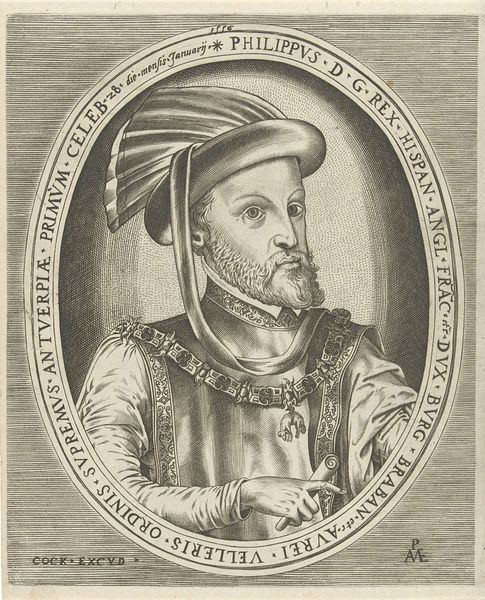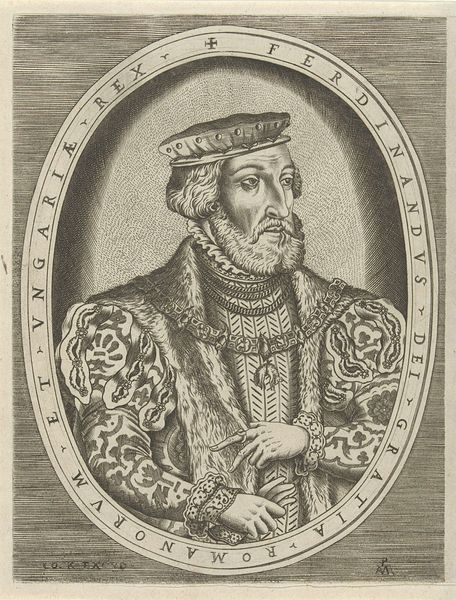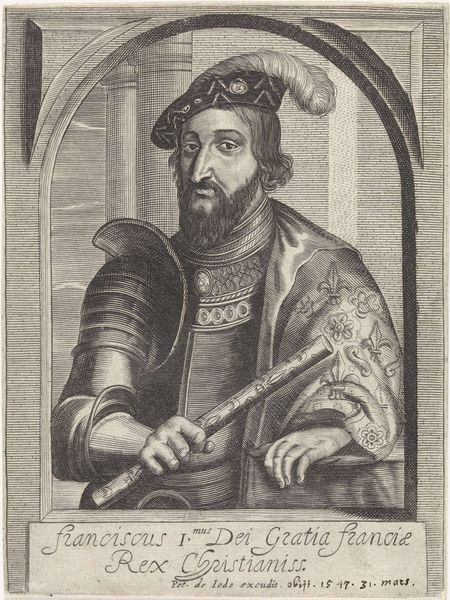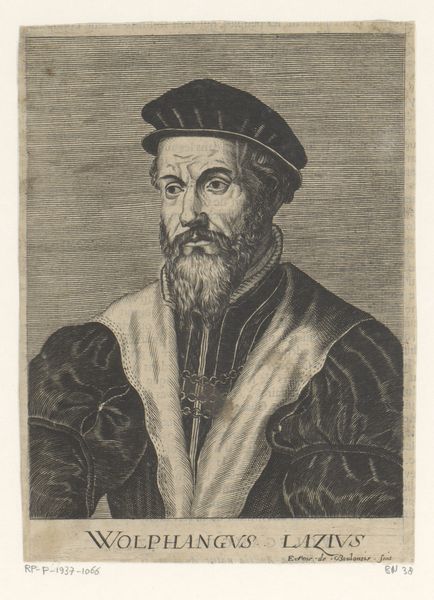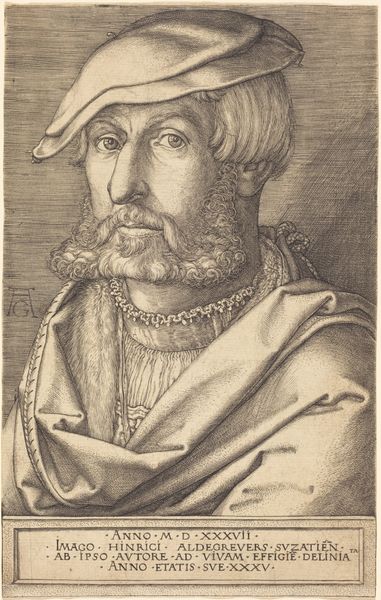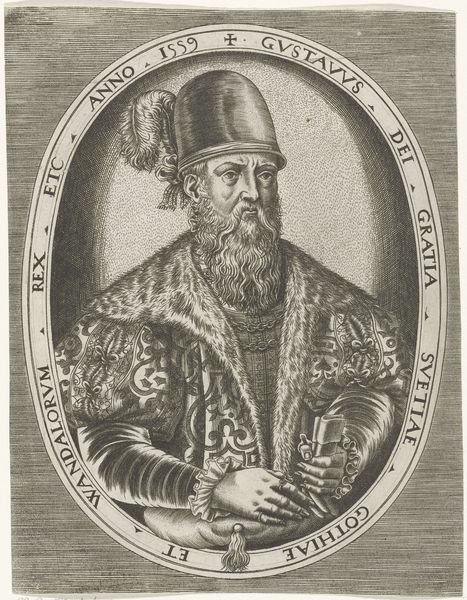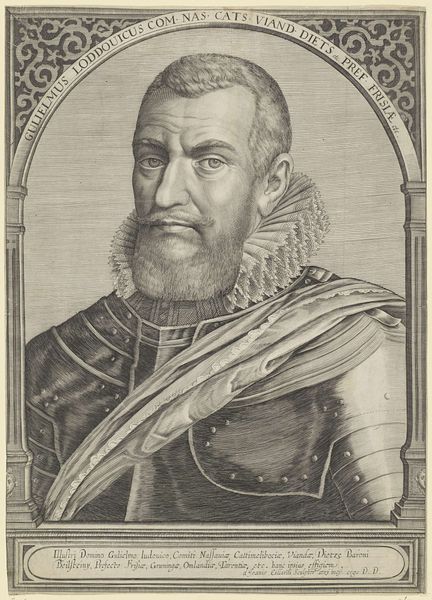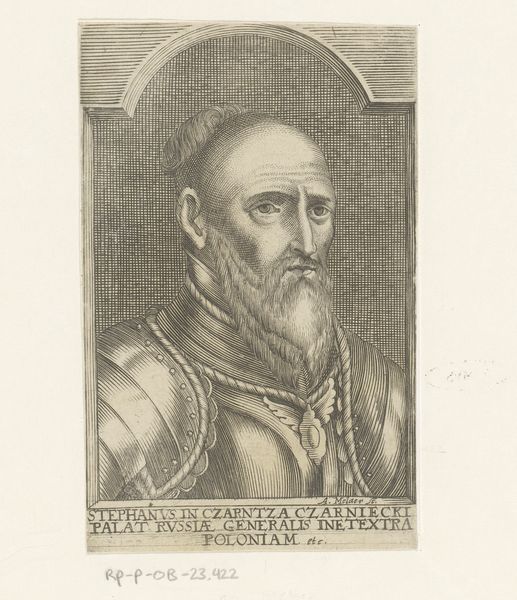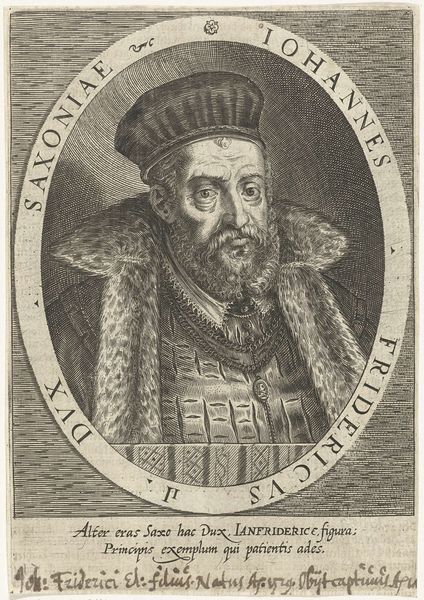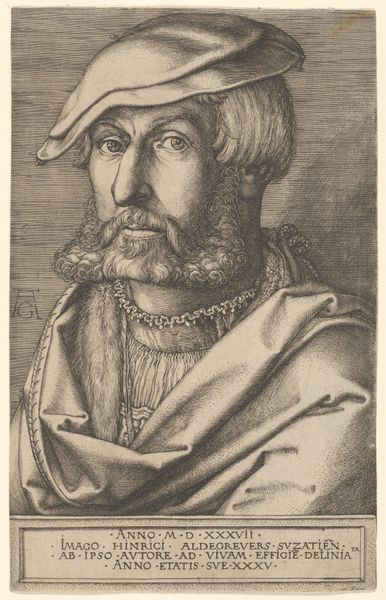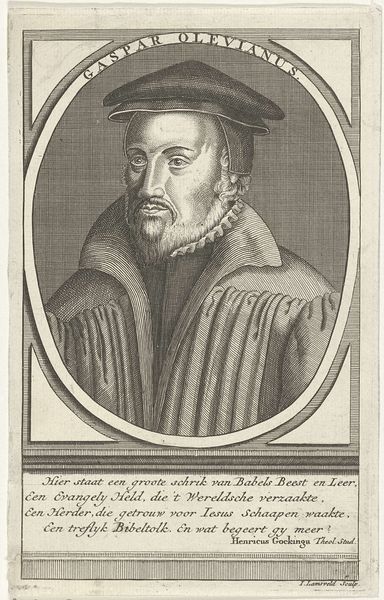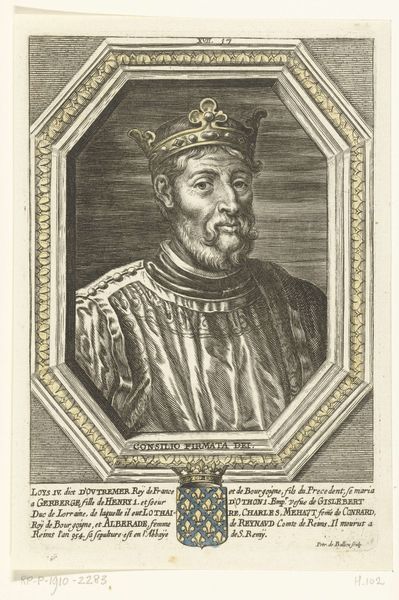
Dimensions: 206 × 135 (image/plate); 211 × 138 mm (sheet)
Copyright: Public Domain
Editor: This engraving, "Emperor Charles V" by Barthel Beham, dates to 1531. It's incredibly detailed, and the stark contrasts give it a sense of formality and power. The aging of the paper contributes a feeling of antiquity, but who was the intended audience for such an image? Curator: It's a fascinating question, one deeply rooted in the political and social landscape of the 16th century. Portraits like these served as powerful tools of propaganda. Consider the Holy Roman Empire at this time; Charles V was a critical figure during the Reformation. Editor: So, it wasn’t just about capturing his likeness? Curator: Not at all. The image, circulated through print, broadcasted his authority and legitimacy throughout the Empire and beyond. Think about the details: his garments, that jeweled elephant on the pendant. What kind of message do these send about his power and reach? Editor: It seems he wanted to convey his dominion. He’s wearing quite a pendant – almost like an elephant from India. Was he implying global control through the jewelry? Curator: Possibly, given the expanding global trade and power dynamics of the time. Remember, representation was key. His physical appearance was strategically managed to shape public opinion. An intaglio, such as this one, can be recreated numerous times, so in effect Charles was creating prints to manage his message throughout the Holy Roman Empire. Editor: I see now! It’s not just a portrait; it’s a statement carefully crafted for public consumption and legitimization. I learned more about the power of accessible image reproduction! Curator: Indeed, by focusing on how the artwork functioned as propaganda at that particular point in history is very revealing. Considering artwork's intended public and its message enriches how we appreciate works like this portrait today.
Comments
No comments
Be the first to comment and join the conversation on the ultimate creative platform.
